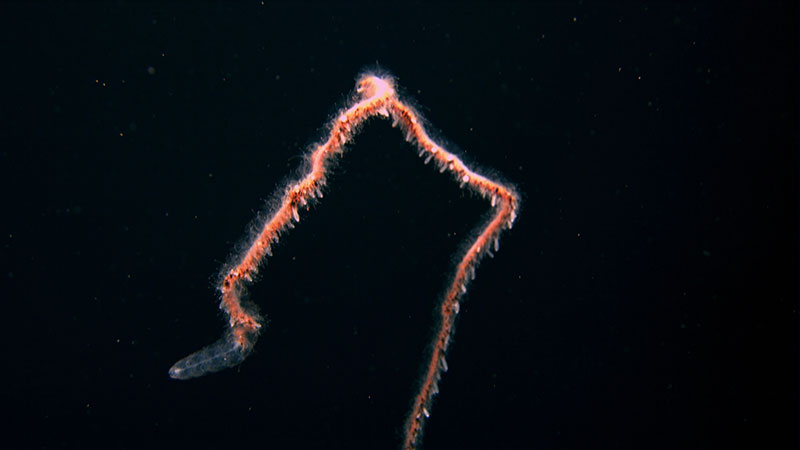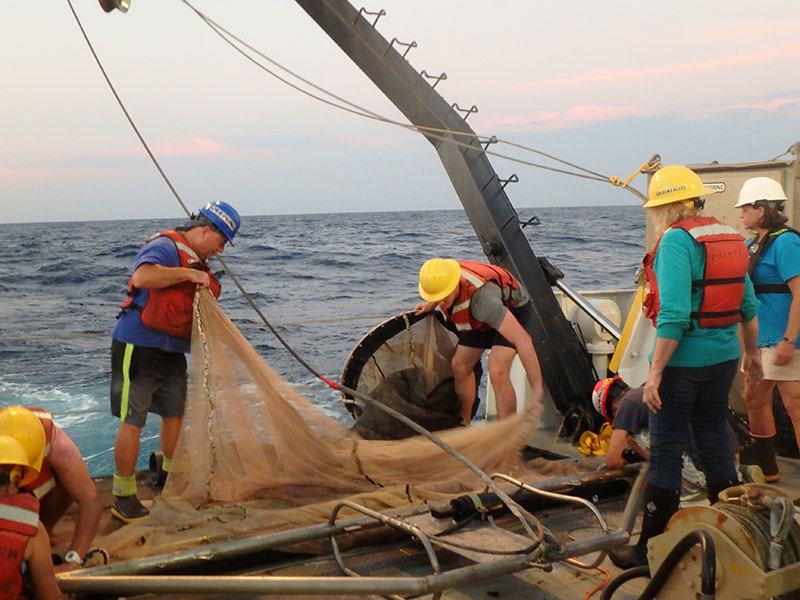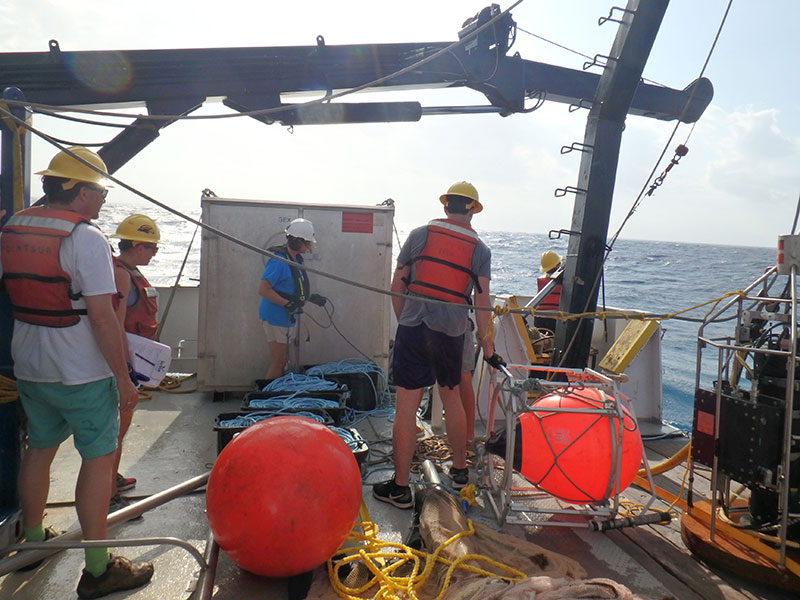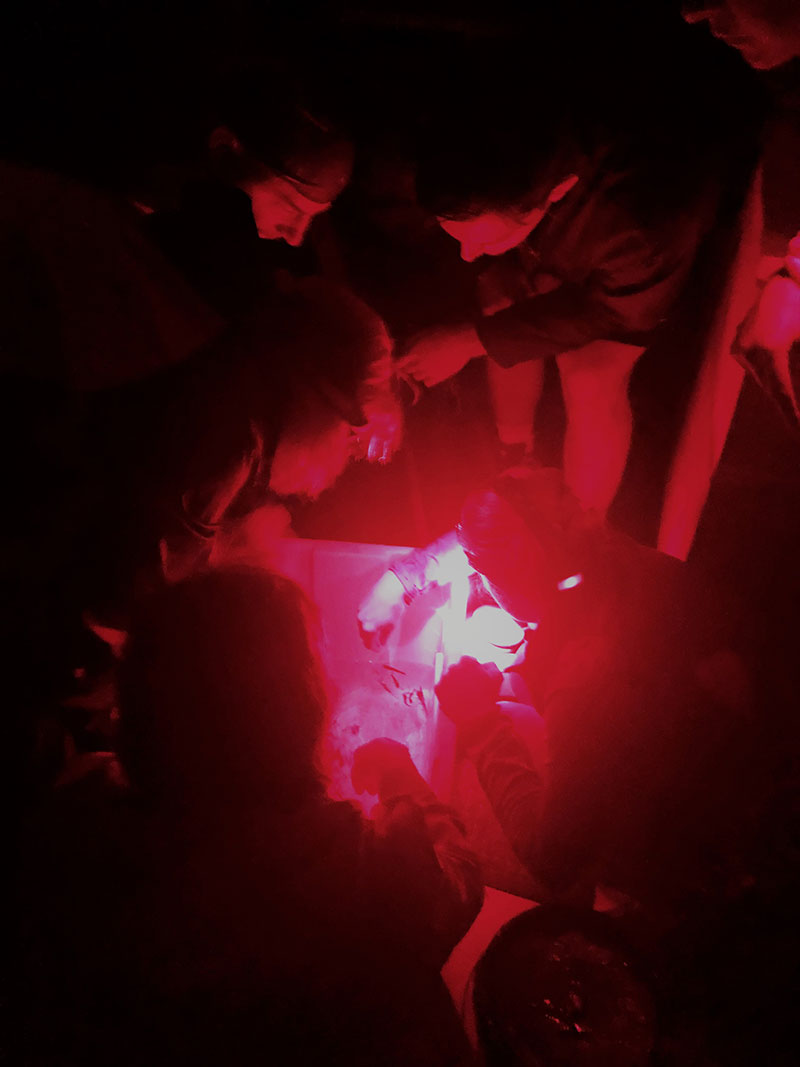
By Heather Judkins, Ph.D., Assistant Professor, Department of Biological Sciences - University of South Florida St. Petersburg
June 15, 2019

A still frame image of a siphonophore, collected by the Global Explorer ROV. Image courtesy of NOAA OER/Global Explorer. Download larger version (jpg, 896 KB).
Whether it is deploying the Medusa or retrieving the Tucker Trawl, everyone onboard has a role to play in the day-to-day operations to make science happen. At dawn, the remotely operated vehicle (ROV) team of approximately seven people are working to get the Global Explorer in the water and down to depth so the science team can then pile into the ROV van per our rotation schedule to observe and record everything we see for the next six to eight hours. We are able to get beautiful images and video as we attempt to zoom and focus in on the various midwater animals we encounter.
After the ROV comes up and is safely on deck, it is time to deploy the Tucker Trawl! This is also a team effort, to deploy and retrieve this midwater net designed to collect organisms for the science team to study in the ship’s lab. It can take anywhere from five to seven hours to get the net back onboard, depending on the depth we are collecting at each time we deploy it. Once we get the cod end (collection tube at the end of the net) in the lab, it’s “lights out” time – this is when we turn off all the lights, don red headlamps, and empty the cod end into a tub to observe any possible bioluminescence that the organisms may be emitting.

Team setting up for a Tucker Trawl deployment. Image courtesy of M. McCall. Download larger version (jpg, 3.9 MB).

Science team and ship's crew deploying the Medusa for its 30-hour adventure. Image courtesy of M. McCall. Download larger version (jpg, 4.0 MB).
When it is time to deploy and retrieve the Medusa, once again, all hands are needed to assist. Whether it is sending out the 1,800 meters (5,905 feet) of line that attaches Medusa to its buoy and GPS transmitter or pulling in the 1,800 meters of line, it takes a coordinated effort among the ship's crew and the Medusa team to bring it safely back onboard.
The bottom line is that at any time, you have to be ready to jump in and help with anything that may be required. It doesn’t matter if the sea conditions aren’t perfect or if you haven’t had enough sleep. What makes this amazing work happen is the dedication of everyone involved so we thank the ship's crew and the Global Explorer and Medusa teams for all of their efforts to allow us to do what we love out here!

Science team observing deep-sea animals collected from a trawl using their red lights to not disturb the organisms. Image courtesy of M. McCall. Download larger version (jpg, 2.2 MB).